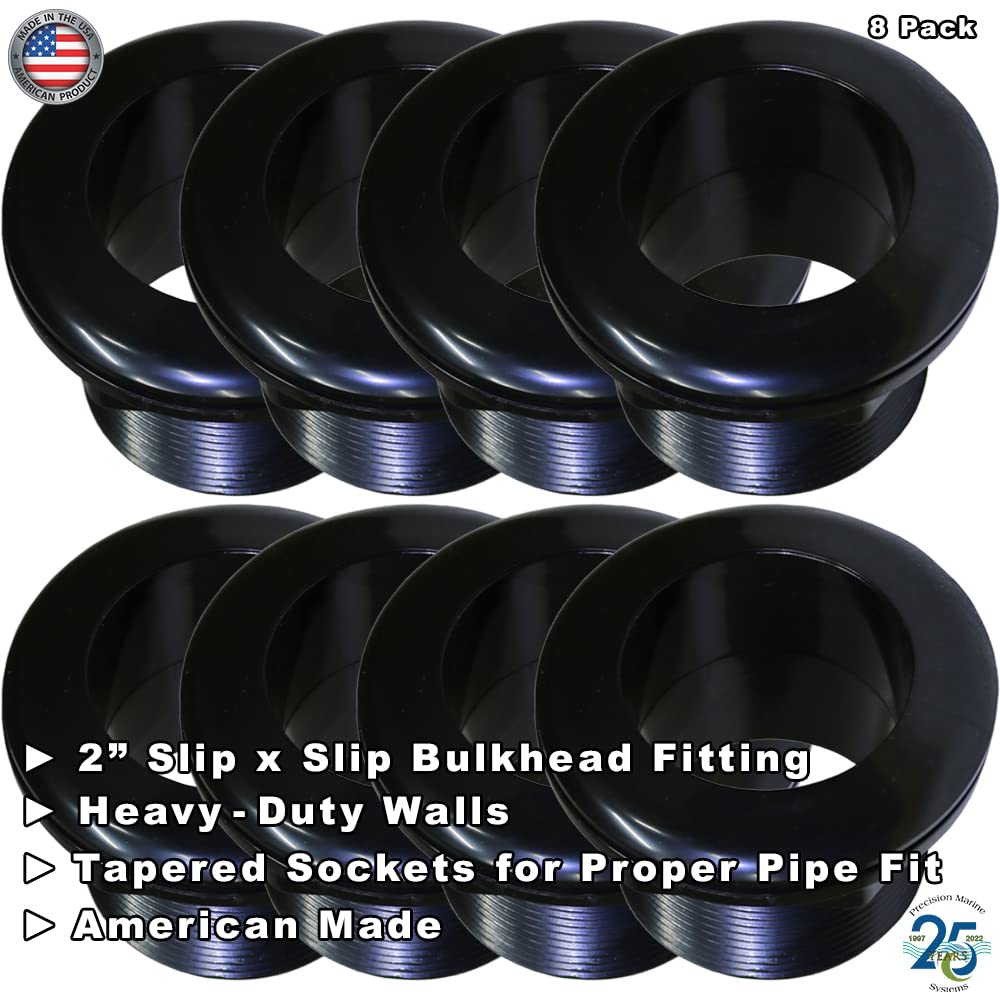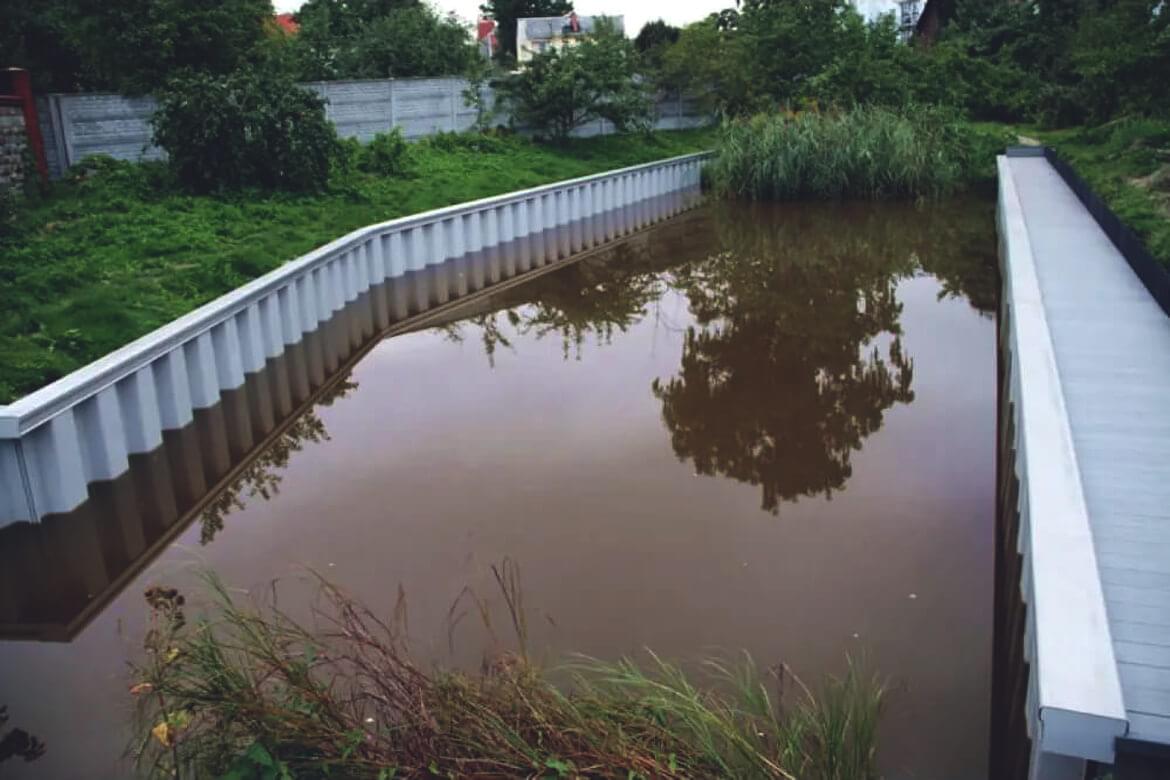Bulkhead on Lake Livingston: Insider Secrets for Long-Term Durability
Exploring the Various Uses of Bulkhead Frameworks in Modern Design
Bulkhead structures play a substantial function in modern-day architecture, serving both useful and visual purposes. They can define spaces, improve storage space remedies, and boost lighting. In industrial setups, they work as centerpieces that mirror brand name identity - Bulkhead on Lake Livingston. In addition, their combination often sustains sound administration and sustainable techniques. Understanding the complete range of their applications exposes much about contemporary style patterns and customer experience. What innovative uses bulkheads might arise in the future?
Specifying Bulkhead Structures
Bulkhead structures play a critical function in contemporary architecture, acting as necessary elements in various building layouts. These frameworks are normally specified as elevated platforms or ceilings, typically used to conceal mechanical systems, wiring, or plumbing. Bulkheads can be located in both commercial and domestic settings, where they give a seamless mix of functionality and appearances. Their design can incorporate lighting fixtures and various other attractive aspects, enhancing the general aesthetic appeal of an area.
Commonly built from products such as wood, drywall, or steel, bulkheads can be tailored to fit the building design and demands of the structure (Bulkhead on Lake Livingston). They serve not just to hide unsightly framework however also to develop defined zones within open areas. By managing the circulation of an area, bulkheads contribute to the spatial organization, making them a significant aspect of modern architectural method. Their interpretation encapsulates both visual and useful measurements.
Functional Applications in Residential Layout
Bulkhead structures play a crucial function in domestic style by helping with room optimization strategies that optimize functional locations. They contribute visual layout components that boost the visual charm of living spaces. In enhancement, these structures give essential structural support options, guaranteeing the integrity and security of the home.
Room Optimization Techniques
As modern domestic designs significantly focus on effective use of room, innovative approaches emerge to make best use of functionality without giving up aesthetics. One prominent strategy includes the combination of bulkhead frameworks, which can delineate areas while supplying necessary storage services. These frameworks can be used to produce vertical storage devices that enhance both company and access. Furthermore, multi-functional furniture, such as convertible couches and foldable tables, complements bulkhead designs, permitting rooms to adjust to varying demands. Open up layout further optimize spatial flow, motivating flexibility in operation. Including integrated shelving and recessed lighting within bulkheads additionally adds to a structured atmosphere, making certain that fully of space is used effectively and sympathetically within the overall design.
Aesthetic Design Components

Structural Assistance Solutions
In contemporary property layout, an effective architectural assistance service is vital for keeping the honesty of spaces while optimizing design and performance. Bulkhead structures play a considerable function in this situation, functioning as both support and partitioning aspects. They can hide mechanical systems, such as pipes and electric circuitry, while supplying support to the ceiling and flooring systems. By tactically positioning bulkheads, architects can develop defined locations within open layout, enhancing use without jeopardizing structural stability. Furthermore, these frameworks can accommodate lights fixtures, adding to both looks and usefulness. To summarize, bulkhead structures are crucial in residential style, offering versatile assistance services that enhance both the performance and aesthetic charm of living areas.
Enhancing Appearances in Industrial Spaces
When commercial rooms embrace cutting-edge bulkhead frameworks, they not only define physical boundaries but also substantially boost the total looks of the atmosphere. These architectural components function as visual prime focus, drawing interest and producing a feeling of intrigue. By incorporating varied products such as timber, metal, or glass, bulkheads can mirror a brand's identity and objective, contributing to a cohesive design.
The critical placement of bulkheads can manipulate light and darkness, including depth and dimension to or else level rooms. This interaction can transform a commercial location right into a welcoming ambience, encouraging client interaction. In addition, making use of color and structure in bulkhead style can stimulate certain feelings, boosting the total consumer experience. Inevitably, the thoughtful combination of bulkhead structures elevates the aesthetic charm of business spaces, making them not only functional however also aesthetically enchanting, consequently fostering a long-term impression on site visitors.
Acoustic Efficiency and Audio Management
Efficient acoustic performance plays a crucial duty in modern architecture, particularly within commercial rooms where sound monitoring is important. Bulkhead structures can greatly boost acoustic high qualities by taking in noise, minimizing echo, and mitigating noise transfer between locations. These attributes are particularly valuable in environments such as workplaces, restaurants, and movie theaters, where clear interaction and an enjoyable acoustic experience are paramount.
The critical positioning and design of bulkheads can help develop sound-buffer zones, successfully separating loud locations from quieter ones. Materials used in bulkhead building and construction, such as acoustic panels and soft finishes, add to their sound-dampening abilities. Additionally, the unification of bulkheads permits the combination of sound-absorbing elements without compromising visual allure. By dealing with acoustic performance, architects can develop unified environments that improve convenience, enhance individual experience, and promote performance, making bulkheads a vital component in the layout of contemporary industrial spaces.
Integrating Bulkheads for Efficient Room Use
Although commonly neglected, the assimilation of bulkheads in architectural design can greatly boost area utilization in modern-day buildings. These architectural elements offer multiple functional objectives, using a means to hide mechanical systems, electrical circuitry, and plumbing without jeopardizing aesthetics. By strategically positioning bulkheads, engineers can create specified locations within open layout, thereby facilitating much better company and flow.
Furthermore, bulkheads can include storage space services and lighting functions, taking full advantage of the capability of otherwise squandered upright room. In household setups, they may define zones such as cooking areas or living areas, while in industrial rooms, they can boost the performance of layouts by clearly noting paths and workplace.
Eventually, the thoughtful integration of bulkheads contributes to a much more organized and visually enticing environment, permitting adaptable spaces that can evolve with the needs of their residents. This approach not only enhances space but additionally cultivates an extra harmonious interaction between form and function.
Bulkheads in Public Architecture

Building Aesthetic Enhancements
While several architectural components go for performance, bulkheads in public style serve a twin function by boosting visual allure. These frameworks usually produce visual passion with their style, integrating effortlessly with bordering components. By utilizing different materials, structures, and colors, bulkheads can add to a special identity for public rooms, such as airports, museums, and collections. Their tactical placement aids to define areas, leading visitors while adding deepness to the general design. In addition, bulkheads can accentuate illumination, creating dynamic environments that alter throughout the day. This visual improvement not only boosts the site visitor experience yet also fosters a feeling of area, making bulkheads an essential consideration in modern-day public architecture. In general, bulkheads embody the combination of type and function.

Architectural Support Solutions
As engineers look for cutting-edge ways to enhance the structural integrity of straight from the source public spaces, bulkheads arise as essential components in the design and building and construction process. These frameworks supply critical support, particularly in areas subject to hefty foot traffic or vibrant tons. By dispersing weight uniformly, bulkheads help avoid architectural failure while enabling functional layout options. In large locations, such as stadiums and convention centers, bulkheads are frequently incorporated into the overall building framework, guaranteeing security and safety and security. Additionally, they can assist in the consolidation of energies and mechanical systems, adding to the efficiency of area usage. Ultimately, bulkheads stand for an essential solution in modern-day public architecture, reinforcing both capability and protection in community-focused settings.
Environmental Management Procedures
Including environmental defense steps into public style has actually ended up being progressively important as metropolitan designers focus on sustainability together with architectural support. Bulkhead structures serve a dual function hereof, working as barriers versus erosion and flooding while concurrently enhancing the visual appeal of metropolitan landscapes. Their design often consists of natural environments such as greenery, which can improve air quality and give habitats for wild animals. Furthermore, bulkheads can be crafted with absorptive materials that enable water absorption, reducing runoff and promoting groundwater recharge. This integration of ecological considerations not just maintains the environment however additionally promotes community strength against environment adjustment. By utilizing bulkheads successfully, engineers add to lasting urban growth that lines up with modern ecological objectives.
Future Trends in Bulkhead Design
Arising trends in bulkhead design reflect an expanding focus on sustainability, technology, and performance in modern style. Developers are increasingly integrating eco-friendly materials, such as recycled compounds and bioplastics, to lower ecological impact. Additionally, the assimilation of wise modern technology is becoming common, enabling bulkheads to offer multi-functional purposes, consisting of power storage space and environment control.
In urban setups, modular bulkhead systems are obtaining traction, offering flexibility in layout and simplicity of setup. These systems can be adapted to numerous landscapes, permitting efficient space usage. Additionally, visual factors to consider are advancing; bulkheads are now being designed to enhance aesthetic allure, typically including imaginative elements that reverberate with neighborhood culture.
As environment durability comes to be a concern, future bulkhead designs will likely focus on flooding protection and stormwater administration, making certain structural stability while dealing with ecological obstacles. This change signifies an all natural method to style that satisfies both human demands and environmental obligations.
Frequently Asked Inquiries
What Products Are Frequently Made Use Of for Bulkhead Building?
Common materials for bulkhead construction consist of concrete, steel, lumber, and composite products. These options provide sturdiness, structural honesty, and resistance to environmental elements, making them appropriate for various applications in building and construction and design jobs.
How Do Bulkheads Affect Building Power Efficiency?
Bulkheads boost developing power effectiveness by providing thermal insulation and minimizing air leak (Bulkhead on Lake Livingston). They aid maintain interior temperature levels, consequently reducing heating and cooling down needs, inevitably resulting in reduced power expenses and improved ecological sustainability
Exist Any Type Of Structure Codes Particular to Bulkhead Structures?
Yes, developing codes details to bulkhead frameworks exist, varying by place. These laws generally attend to safety and security, architectural stability, and ease of access, making certain that bulkheads meet needed standards for building and construction and design within a provided jurisdiction.
Can Bulkheads Be Conveniently Customized or Gotten Rid Of Later?
Bulkheads can frequently be customized or removed, relying on their design and construction. However, such alterations may call for careful planning and adherence navigate here to building ordinance to ensure architectural honesty and safety and security are preserved throughout the process.
What Are the Expenses Connected With Setting Up Bulkhead Structures?
The prices connected with installing bulkhead structures can differ considerably, commonly affected by products, layout intricacy, and labor. Usually, expenditures vary from modest to high, depending on the job's certain demands and place.
Bulkhead frameworks play an important role in modern-day style, serving as essential components in different building styles. Bulkhead structures play a vital role in property layout by assisting in room optimization techniques that maximize useful locations. Typically ignored, the integration of bulkheads in building design can significantly enhance space utilization in modern structures. As engineers look for cutting-edge methods to enhance the architectural honesty of public areas, bulkheads arise as essential parts in the style and building process. The prices associated with installing bulkhead structures can vary considerably, usually affected by products, layout complexity, and labor.